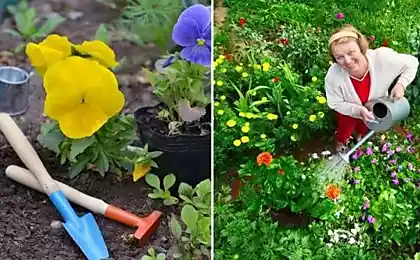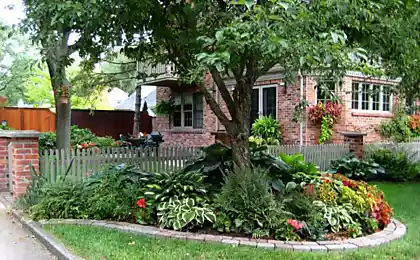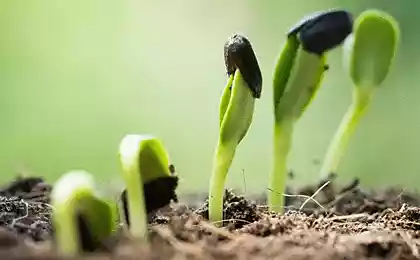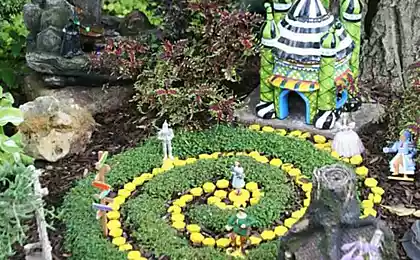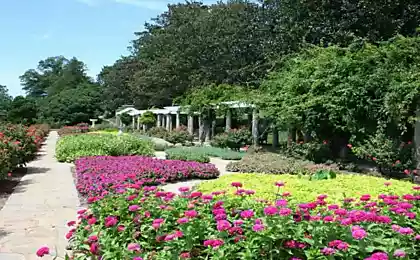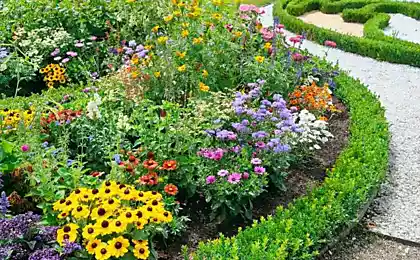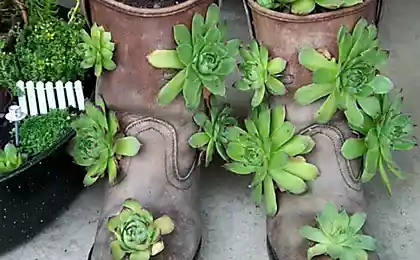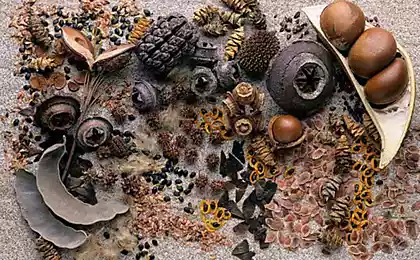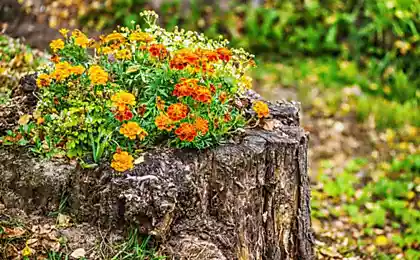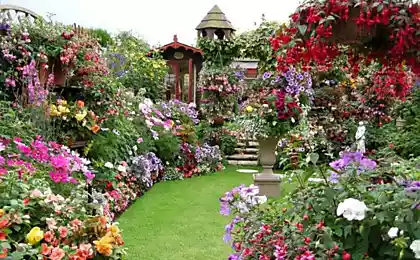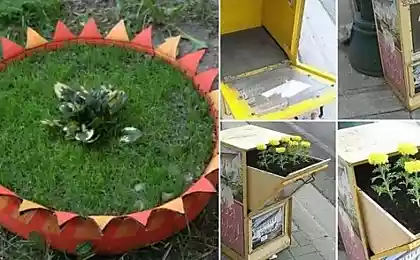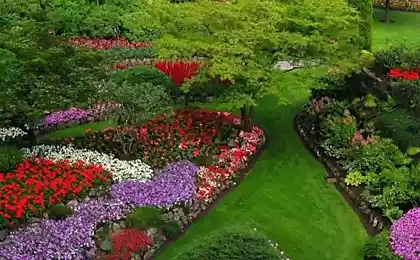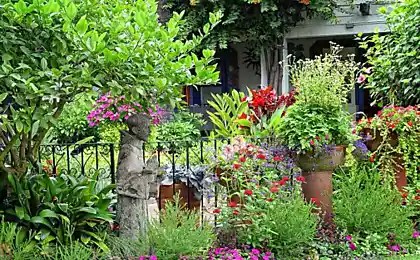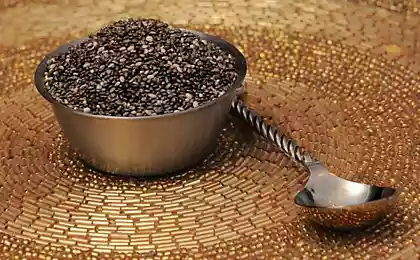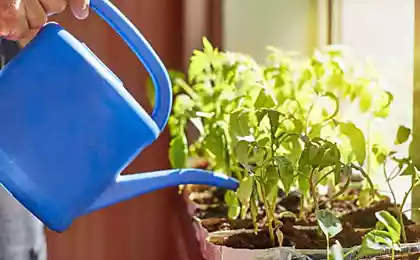163
In the young month of April, I do not get out of the flower garden, I want to become a flower on my flower bed.
The April tasks of the flower grower can be divided into two parts: work on the site and at home or in a greenhouse for the care of seedlings. What flowers to plant in April, what to feed and what to do with seedlings? It's all in our article.

What flowers to plant in April Work on the site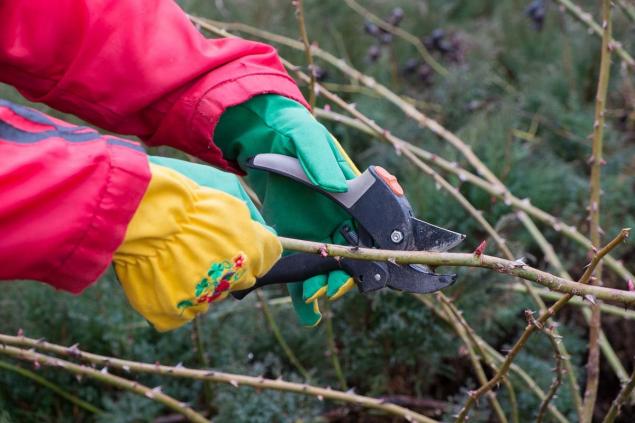
If the shelter was initially single-layered, then first make small holes for easy ventilation and drying excess moisture. Under such a ventilated shelter, the rose can safely stand until the end of April.
At the end of April, it is already possible to plant bulbs in the ground: gladiolis and lilies. before planting, it is necessary to clean the onion of husks. It is also advised to treat the tuber with growth stimulants. Plant the plant is only when the temperature reaches ten degrees and the upper layers of the soil warm up.

The second month of spring is a good time to think about the decoration of the flower bed. It is necessary: to choose a place for it, decide on the shape of the future design, carry out marking work, beautifully lay stones, fill the place with earth and prepare the selected plants for planting.

After the fall of snow, the overwintered lawn is usually covered with plant residues and has a not very presentable appearance. The first thing is to re-establish air exchange in the root layer of the soil. To do this, two procedures with little-known names are performed: verticalization (piercing the surface of the lawn with pitchforks) and scarification (looping with rakes). It also does not hurt to take preventive measures against diseases, apply fertilizers and mulch the lawn with dry sand.
April is the last month when you can still sow flowers with a short growing season. This will allow them to bloom earlier and will bloom longer.
This group includes annual asters and dahlias, velvets, amaranth, calendula, cosmea, nasturtium, rudbekia and others.
In April, you can have time to sow on seedlings and March flowers: alissum, panty eyes, petunia and dolphinium. They will bloom a little later, but they will not stretch out. At the beginning of the new season, houseplants also require increased attention. Many of them under the warm rays of the April sun come out of dormancy and prepare for the growing season.
In order for green pets to thank us for their rapid growth and friendly flowering, they need to be transplanted into more spacious pots. Young plants especially need this procedure. Adult houseplants that have already reached their limit and are no longer growing need an annual transplant. It is enough to replace the depleted top layer of soil.
That’s how much work you have to do, dear gardeners! Happy season and bright friendly flowering of green pets, friends!

What flowers to plant in April Work on the site
- As in the garden, work in the flower garden begins with the removal of garbage and plant residues.
- Next, you need to take care of perennials. As soon as the sun warms, remove the film from the plants, otherwise their kidneys may rot. Lapnik can still be left, it will shade flowers from the bright sun and protect from night frosts.
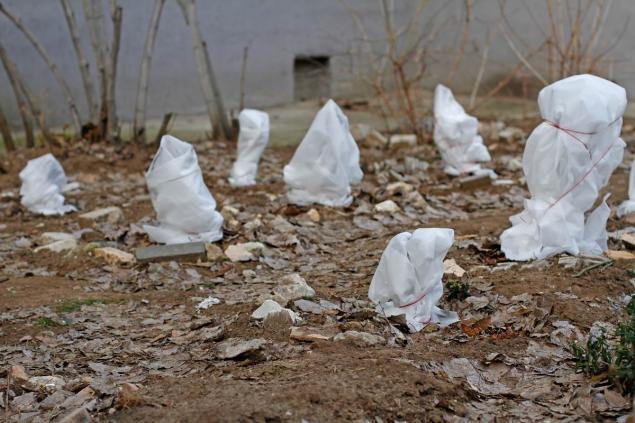
Liberate the clematis on the trellises. The roots of the irises were bare and filled with loose soil. Old astilbes, dolphiniums and floxes in April is the time to dig up to multiply by dividing the bush. - In April, it is advisable to feed the main spring flowers - early flowering tulips and daffodils.

At the beginning of growth, they require mainly nitrogen. As soon as the snow comes off and the soil dries a little, you can spread dry feeding (ammonium nitrate, superphosphate, potassium salt in a ratio of 2: 2: 1) across the plot at the rate of 50 grams per square meter with subsequent irrigation.
When the tulips stretch for 7-10 cm, feed them ammonium nitrate and superphosphate. For 1 square meter you will need 30-40 grams of ammonium nitrate and 20-30 grams of superphosphate, which will need to be dissolved in 10 liters of water.

If the shelter was initially single-layered, then first make small holes for easy ventilation and drying excess moisture. Under such a ventilated shelter, the rose can safely stand until the end of April.
At the end of April, it is already possible to plant bulbs in the ground: gladiolis and lilies. before planting, it is necessary to clean the onion of husks. It is also advised to treat the tuber with growth stimulants. Plant the plant is only when the temperature reaches ten degrees and the upper layers of the soil warm up.

The second month of spring is a good time to think about the decoration of the flower bed. It is necessary: to choose a place for it, decide on the shape of the future design, carry out marking work, beautifully lay stones, fill the place with earth and prepare the selected plants for planting.

After the fall of snow, the overwintered lawn is usually covered with plant residues and has a not very presentable appearance. The first thing is to re-establish air exchange in the root layer of the soil. To do this, two procedures with little-known names are performed: verticalization (piercing the surface of the lawn with pitchforks) and scarification (looping with rakes). It also does not hurt to take preventive measures against diseases, apply fertilizers and mulch the lawn with dry sand.
April is the last month when you can still sow flowers with a short growing season. This will allow them to bloom earlier and will bloom longer.

This group includes annual asters and dahlias, velvets, amaranth, calendula, cosmea, nasturtium, rudbekia and others.
In April, you can have time to sow on seedlings and March flowers: alissum, panty eyes, petunia and dolphinium. They will bloom a little later, but they will not stretch out. At the beginning of the new season, houseplants also require increased attention. Many of them under the warm rays of the April sun come out of dormancy and prepare for the growing season.

In order for green pets to thank us for their rapid growth and friendly flowering, they need to be transplanted into more spacious pots. Young plants especially need this procedure. Adult houseplants that have already reached their limit and are no longer growing need an annual transplant. It is enough to replace the depleted top layer of soil.
That’s how much work you have to do, dear gardeners! Happy season and bright friendly flowering of green pets, friends!
Husband poured a pot of green borsch in the sink, no more so cook, learned
Celebrities are like a single mother.




